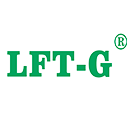новый блог
(1) мононить
В оригинале речь идет о непрерывном одиночном волокне, скрученном фильерой с одним отверстием, но в практических применениях оно часто включает в себя нить с небольшим количеством отверстий, состоящую из 3–6 одиночных волокон, скрученных фильерой с 3–6 отверстиями. Моноволокно из грубого синтетического волокна (диаметр 0,08 ~ 2 мм) называется щетиной и используется для изготовления веревок, щеток, ежедневных сетчатых мешков, рыболовных сетей или промышленной фильтровальной ткани; Более тонкая полиамидная мононить используется для изготовления прозрачных женских носков или других тонких трикотажных изделий.
(2) составной шелк
Нить, состоящая из десятков отдельных волокон. Сложные волокна химических волокон обычно состоят из от 8 до 100 отдельных волокон. Подавляющее большинство тканей изготовлено из сложного шелка. Это связано с тем, что сложный шелк, состоящий из нескольких отдельных волокон, более податлив, чем одиночный шелк того же диаметра.
(3) карнизный трос
Шелковая полоса, состоящая из более чем ста или нескольких сотен отдельных волокон, используемая для производства кордной ткани для шин, широко известной как кордная проволока.
Продукт из химического волокна разрезается на кусочки длиной от нескольких сантиметров до десятков сантиметров, такая длина волокна называется штапельным волокном. В зависимости от длины разреза штапельные волокна можно разделить на штапельное волокно хлопка, штапельное волокно шерсти и штапельное волокно средней длины.
(1) хлопковое штапельное волокно
Длина составляет 25 ~ 38 мм, волокно тонкое (линейная плотность 1,3 ~ 1,7 дтекс), аналогично хлопковому волокну, в основном используется для смешивания с хлопковым волокном, например, полиэфирным штапельным волокном хлопкового типа и смешиванием хлопкового волокна, в результате получается ткань. называется тканью «полихлопок».
(2) штапельное волокно для волос
Длина 70 ~ 150 мм, грубое волокно (линейная плотность 3,3 ~ 7,7 дтекс), похожее на шерсть, в основном используется для смешивания с шерстью, например, полиэфирное штапельное волокно шерстяного типа и смесь шерсти, полученная ткань называется «шерстью». ткань «полиэстер».
(3) волокно средней длины
Длина составляет 51 ~ 76 мм, толщина волокна находится между хлопковым и шерстяным типом (плотность линии 2,2 ~ 3,3 дтекс), в основном используется для ткачества тканей со средним и длинным волокном.
Штапельные волокна можно смешивать с натуральными волокнами, а также с другими химическими волокнами, поэтому смешанные ткани обладают хорошими комплексными свойствами. Кроме того, короткое волокно также может быть чистым прядением. В производстве химических волокон во всем мире выход штапельных волокон выше, чем нитевых. В зависимости от характеристик волокна некоторые сорта (например, нейлон) производят нить; Некоторые разновидности (например, акриловое волокно) производят в основном короткие волокна; Некоторые сорта, такие как полиэстер, имеют аналогичное соотношение.
Грубый отрез шелка с грубыми деталями, низкой прочности, большое удлинение при разрыве, сильная термическая усадка, хорошее окрашивание и легкая обработка щелочью позволяют в полной мере использовать эти характеристики для разработки уникальных свойств текстиля. Физические свойства шелка с крупными деталями связаны с соотношением диаметров крупных деталей и другими факторами. Обычная грубая нить имеет более высокое удлинение при разрыве и усадку при кипячении, а также более низкую прочность на разрыв и текучесть. Его сильная усадка позволяет смешивать грубые волокна с другими волокнами, образуя смешанные волокна с гетероусадкой. Кроме того, грубая часть шелка с грубыми деталями легко деформируется, поэтому в процессе ткачества, крашения и отделки следует обращать внимание на проблемы с низкой прочностью. Исходный шелк с грубыми деталями — круглый шелк. С развитием технологии производства шелка с грубыми деталями последовательно появились некоторые специальные шелка с грубыми деталями, такие как шелк особой формы с грубыми деталями, шелк из смешанных волокон с грубыми деталями, микропористый шелк с грубыми деталями и шелк с грубыми деталями тонкого денье и т. д. . Они либо обладают особым ощущением и стилем, либо обладают особой впитываемостью и в основном используются при разработке высококачественных тканей.
Заимствованное слово для дифференцированного ухода за химическим волокном, родом из Японии, обычно относится к оригинальному химическому волокну, основанному на физической деформации или химической модификации волокнистого материала, оно явно отличается от обычного химического волокна по внешнему виду или внутреннему качеству. Дифференциальное волокно не только улучшает характеристики и стиль химического волокна, но также придает химическому волокну новые функции и характеристики, такие как высокое водопоглощение, электропроводность, высокая усадка и окрашивание. Поскольку дифференциальное волокно в основном используется для улучшения эффекта моделирования, комфорта и защиты, оно в основном используется для разработки тканей для одежды, таких как шерсть, лен и шелк, а некоторые из них также используются для разработки декоративного текстиля и промышленного текстиля. 98
Существуют два или более типа полимеров, которые не смешиваются на поперечном сечении волокна. Это химическое волокно называется композитным волокном или двухкомпонентным волокном. Поскольку два или более компонента, содержащиеся в волокне, дополняют друг друга, характеристики композитного волокна обычно лучше, чем у обычного синтетического волокна, и оно имеет множество применений.
Существует много видов композитных волокон, которые можно разделить на две категории в зависимости от их морфологии, а именно: двухслойные и многослойные. Двухслойный тип включает параллельный тип и тип с обшивкой, многослойный тип включает параллельный многослойный тип, радиальный тип, многожильный тип, тип с текстурой древесины, встроенный тип, тип «морской остров» и разделенный тип.
Поскольку толщина одного волокна оказывает большое влияние на эксплуатационные характеристики ткани, химические волокна также можно классифицировать по толщине одного волокна (линейная плотность), обычно разделяя на обычное волокно, тонкое волокно и микроволокно. и очень тонкое волокно.
Появившись в Японии в конце 1980-х годов, новые синтетические материалы стали популярны во всем мире благодаря новым и уникальным сверхъестественным стилям и текстурам, таким как персиковая кожа и ручки из ультратонкой пудры. Новое синтетическое волокно, полученное в результате полимеризации, прядения, ткачества, крашения и отделки, шитья и других этапов, использует новую модификацию и композитную технологию, является своего рода натуральным волокном, а синтетическое волокно не может сравниться с предыдущим новым волокнистым материалом. В зависимости от товарной формы новое композитное волокно в основном включает в себя суперпушистый тип, супердрапируемый тип и супертонкий тип. По ощущениям его можно разделить на ощущение шелка, ощущение персиковой кожи, ощущение ультратонкой пудры и ощущение новой шерсти.
